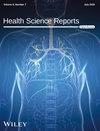Exposure to Adverse Childhood Experiences and Mental Health Issues in a Young-Adult Sample of University Students in Bangladesh: A Cross-Sectional Study
Abstract
Background and Aims
The prevalence of adverse childhood experiences (ACEs) is remarkably high in Bangladesh, and there is well-documented evidence establishing a relationship between ACEs and mental disorders in children and adults. However, little is known about how ACE exposure affects young adults' mental health. Therefore, this study aims to estimate the prevalence of ACEs and assess the relationship between ACE exposure and developing anxiety and depression symptoms in a young adult sample of university students.
Methods
A cross-sectional survey comprising 858 young adult students aged 18–29 years, enrolled in an undergraduate or graduate level of study at a large university in Bangladesh, was conducted between October and December 2023. ACE exposure was measured using ten items from the CDC-developed ACE tool. Self-reported anxiety and depression symptoms were assessed using the Generalized Anxiety Disorder 7-item Scale and the Patient Health Questionnaire-9. The associations between the variables of interest were assessed using multivariable logistic regression.
Results
More than half (54.1%) of the students reported experiencing ACEs. The prevalence of developing moderate-to-severe anxiety and depression symptoms was 34.4% and 71.6%, respectively. One item increase in the ACE score increased the odds of experiencing moderate-to-severe anxiety symptoms by 27% (adjusted odds ratio [AOR]: 1.27; 95% confidence interval [CI]: 1.16–1.38) and moderate-to-severe depression symptoms by 19% (AOR: 1.19; 95% CI: 1.08–1.31).
Conclusion
ACE exposure is prevalent in this sample of university students and is associated with developing anxiety and depression symptoms. Exposure to ACEs should be considered in developing intervention strategies for improving young adult students' mental health.


 求助内容:
求助内容: 应助结果提醒方式:
应助结果提醒方式:


